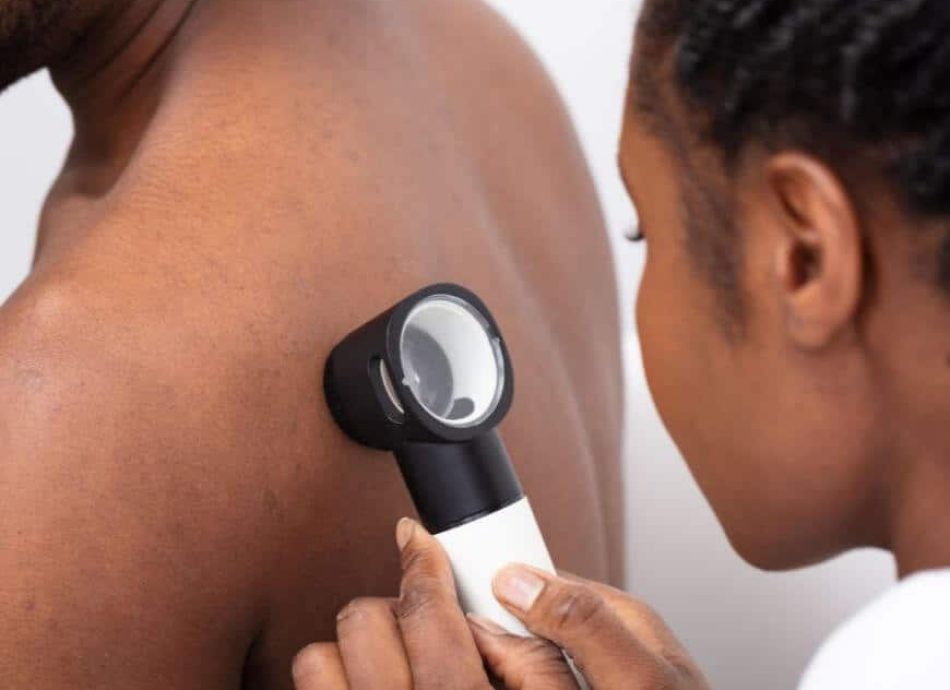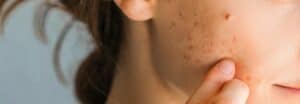Award winning dermatology service, with over 20 years of experience
Short waiting lists, on some occasions offering same week appointments
Safe environment, in Care Quality Commission approved facilities
Dermal Fillers
dermal fillers shrewsbury
Hyaluronic acid, a material naturally produced in the skin, is injected into areas that have depleted levels and may appear to need filling or show signs of ageing in dermal fillers. By giving the skin stability and structure, these semi-permanent injections carried out with a tiny needle, produce a naturally plump and young appearance.
HOW DO DERMAL FILLERS WORK?
CONSULTATION WITH AN AESTHETIC DOCTOR
TREATMENT CONDUCTED BY AN AESTHETIC DOCTOR
TOP UP TREATMENTS WHERE REQUIRED
Hyaluronic acid is a chemical found in our bodies. As we age, our bodies stop making as much hyaluronic acid, collagen, and elastin, which all help us seem young. As a result, the moisturising and plumping effects diminish, and our skin starts to look aged, sagging, and wrinkled.
Hyaluronic acid, a transparent gel that is the major component of dermal fillers, is a substance that naturally integrates into the tissue after being injected into the skin to restore lost volume.
Dermal fillers can be injected into problem areas on the face, neck, or back of the hands with the help of a little needle to create younger-looking skin and revive the skin’s overall appearance. Since the procedure is not permanent, you might need further injections in the future to maintain your youthful appearance.
Reactions are uncommon, and all potential side effects will be covered during your appointment. Anyone pregnant or nursing should avoid using dermal fillers. It’s crucial to wait until the skin has fully healed if you’ve had laser therapy or chemical peeling before proceeding with dermal fillers, so we advise waiting two weeks. In a similar vein, we do suggest waiting at least two weeks before receiving any more skin treatments. Diseased or irritated skin is not a good candidate for dermal fillers. We would not advise the procedure if you have another active skin condition in the treatment area.
BENEFITS OF DERMAL FILLERS
- Having plumper, younger-looking skin
- A reduction in the signs of ageing
- No downtime
- Results noticed right away
- Scarring’s appearance has improved
- Gradual development throughout time to produce the intended goals
- Results that look natural and subtle
- If you are displeased with the outcomes, you can dissolve the filler.
Dermal fillers are the best course of action for you if you want to:
- Enhance the volume and definition of the lips
- Reduce shadowing behind the eyes
- Improve the corners of the mouth that are downturned
- Reduce lines around the mouth
- Improve jowls
- Lessen the appearance of a hook nose
- Reduce lines around the mouth
- Youthful looking hands
REQUEST A CALL BACK
Please fill in this form and one of our team will give you a call back to arrange a consultation with one of our expert dermatologists.

HEAR FROM OUR PATIENTS
WHY CHOOSE ST. MICHAEL'S CLINIC for Dermal Fillers in Shrewsbury?
St. Michael’s Clinic is regulated by the Care Quality Commission, ensuring the best level of treatment is provided to you in a safe environment. We are part of the Dermatology Partnership, a leading group of dermatology clinics, defined by clinical excellence and focusing on leading dermatological care.
INSIGHTS AND ADVICE

The Ultimate Manual to Skin Protection – Deciphering SPF
Using Sunscreen for Optimal Protection Understanding the SPF label on skincare items can feel confusing, especially for those unfamiliar with skincare. Fear not, we’re here to guide you. This comprehensive guide will delve into SPF’s role in skincare, how to select the right SPF and

Exploring Varicose Veins: Recognising, Managing and Preventing
Varicose veins portray themselves as twisted, enlarged veins that can disrupt the allure of your legs and incite discomfort. They are a common concern, specially as we get older. To manage and potentially alleviate the problems they present, understanding varicose veins is essential. In our

Revealing the Truth About Acne: A Comprehensive Review for Acne Awareness Month
June is globally celebrated as Acne Awareness Month, offering a platform to shed light on one of the world’s most universal skin disorders. The main purpose of this month is to emphasise the importance of knowledge, support and accessible remedies for individuals grappling with acne.




